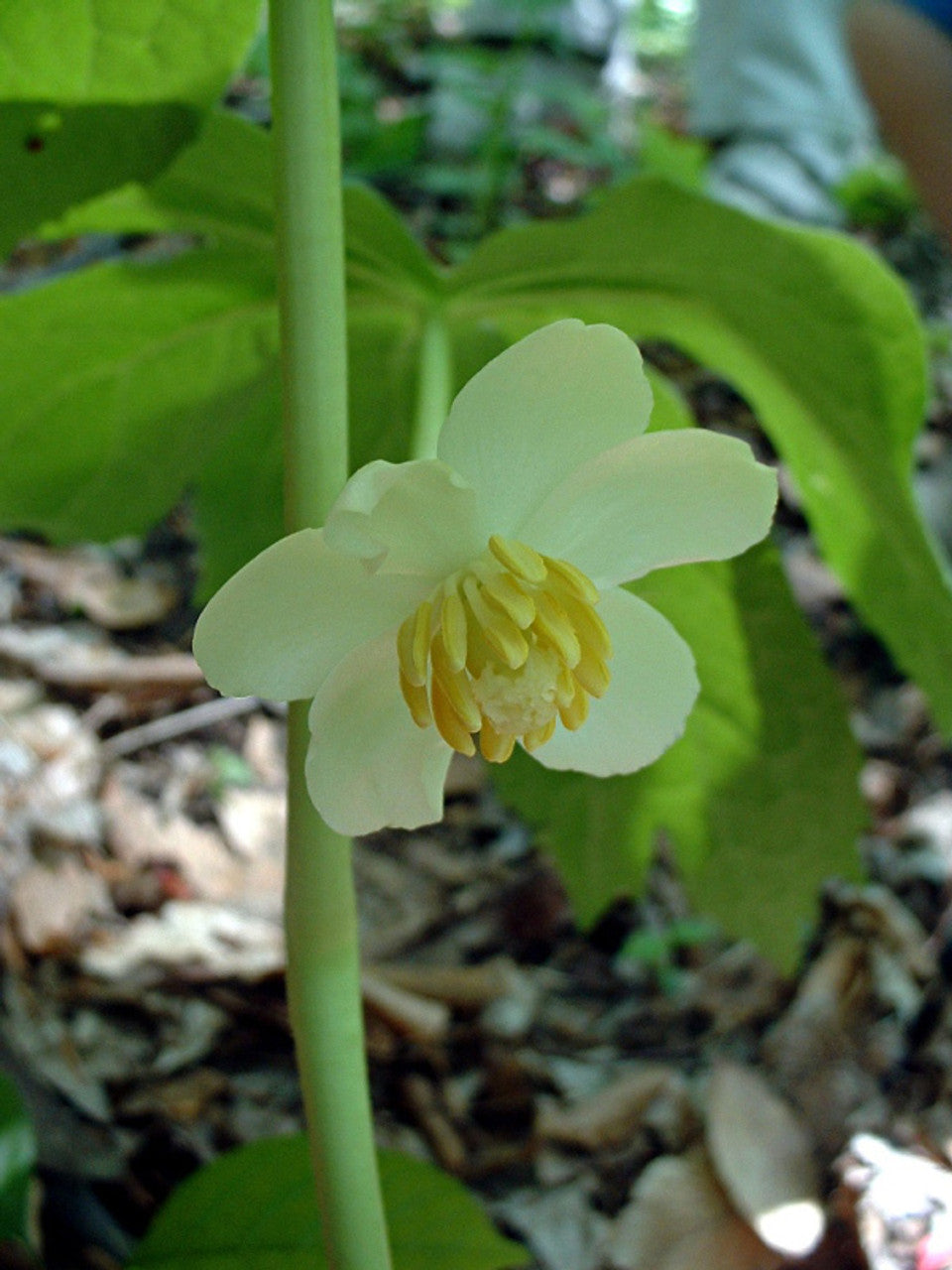
May Apple
May apple (Podophyllum peltatum) is a native woodland plant and a member of the Barberry family, which grows in rich, moist soil in filtered or full shade. It is native to most of eastern North America and is prized in native plant gardens for its large umbrella-shaped leaves that appear at the end of short stems from an underground rhizome in early spring. It’s sometimes called ‘Jack-in-the-pulpit’ for these dramatic foliage colonies, which spread to form clusters of plants as they grow over many years. In addition to its bold, architectural foliage, Mayapple also has hidden, fragrant white spring flowers and white berries that have a medicinal value. A member of the “Mandrake” family of plants, Mayapple or wild mandrake, as it is commonly called, has a natural affinity with water, so it is a great native plant for wetlands and rain gardens.
May apple thrive in woodland areas and are native to regions in the Southeast.
May apple boast large, shiny, lobed leaves, each one at the end of a short stem. Plants with one leaf won’t flower, but two-leafed plants will send up one white flower. It appears in April or May, and resembles a nodding, creamy white flower, as it emerges from between the lobes of the large, maple-like leaves, at the fork where the two stems join. The flower is somewhat hidden under the large leaves. The bloom is delicate and subtly fragrant, and lasts for about two weeks. It’s a pollinator attractant, especially for early-season foragers like bumblebees.
In early spring, leaves begin to unfurl and develop, eventually maturing into umbrella-like, lobed leaves up to a foot across, with five to nine finger-like lobes. As each spring’s foliage dies back in midsummer, new foliage emerges to replace it. Throughout the rest of the year, a rosette of leaves persists at ground level.
The large leaves of Mayapple are attractive and architectural, and it’s one of the first native plants to put on a show in the spring. In garden plantings, the flower goes largely unseen, but it has a delicate and subtle beauty to it. Mayapple’s giant leaves give the plant a formal, sculptural, or architectural quality, especially as each new season’s foliage unfurls in the spring.
Do May apple really grow fruit?
Small green fruits appear in early summer and mature to pale yellow. They are edible when fully ripe and soft. However, they are mostly just a wild edible for the occasional forager, such as the box turtle I’ve seen many times munching on them. Like most native plants, all other parts of this plant are toxic, so plant with care if you have pets and/or small children who like to nibble on plants.
Mayapple prefers partial to full shade, rich, moist, well-drained soil with high organic content. Gardeners can use it in woodland plantings, or in shaded borders or naturalized areas in the yard, under trees, for example. It’s a relatively low-maintenance, easy-to-grow plant once it’s established. It spreads to form attractive colonies of plants, which form by underground rhizomes and offer an almost ground-cover-like blanket of foliage each spring. Midsummer, the foliage yellows and dies back, and you’ll want to have some later-emerging shade plants to take its place. Ferns, hostas, foamflower, or wild ginger, for example. The large, crinkled leaves are also attractive additions to wildflower bouquets when cut.
Mayapple is a great woodland or shade plant, as it’s both low-maintenance and ecologically important. It provides natural ground cover for native woodland gardens, and it helps stabilize soil as it slowly spreads over many years. It also fills in space each spring, which can serve as protective, seasonal ground cover for small wildlife. The white berries are a food source for some wildlife. Because all other parts of this plant are poisonous to humans and many animals, plant this one with care and discretion in areas where pets and/or children are likely to put plants in their mouths.





